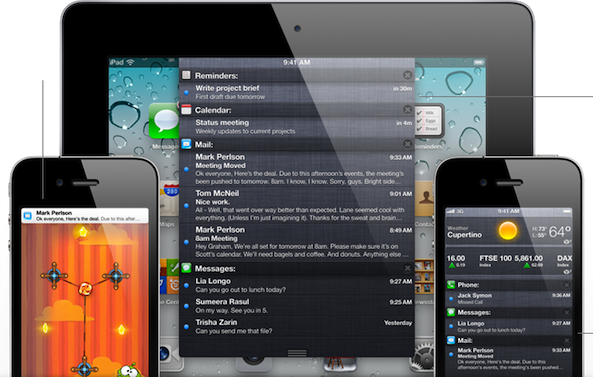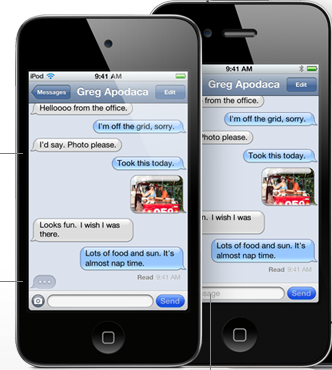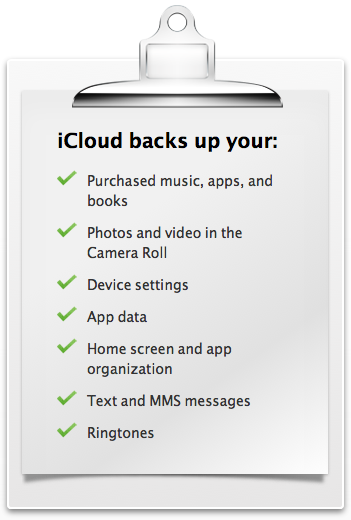Yesterda’s WWDC kickoff provided more than a few talking points, with iOS 5 and iCloud being two of the biggest. Granted OS X Lion is one fine looking piece of software, but for us it’s the mobile stuff that gets the pulse racing.
This post will be a little roundup of just a few of the most important new things we’ve learned today, with links to some more in-depth coverage inside the iDB content vaults. So, without further ado, let us begin…
Shall we start at the beginning?
iOS 5 and its new bells & whistles
With no new iPhone being announced at this year’s WWDC, all the attention turned to the software behind the hardware and iOS 5 became the most rumored-about release of Apple’s mobile OS ever. Top of the list of most-wanted changes was the newly revamped notification system.
Accompanying the new shade is a revamped lock-screen. Here, users will find a similar layout to that of the Notification Center, minus the widgets. Items can be swiped right from the lock-screen and users will be taken to the relevant apps without the need for any more taps.
If this looks familiar, it’s because the system implemented by iOS 5 is rather similar to a popular jailbreak tweak coded by a young man going by the name of Peter Hajas. What’s he doing these days you ask? Well, he’s working for Apple of course.
If you can’t beat them, buy them.
Another marquee feature added to iOS is the new iMessage – Apple’s take on RIM’s BlackBerry Messenger system.

Providing iOS users with a free messaging system, iMessage allows users to send text, images and audio to each other with ease.
With iMessage, we’ve created a new messaging service for all iOS 5 users. You can send unlimited text messages via Wi-Fi or 3G from your iPad, iPhone, or iPod touch to anyone with one of those devices. iMessage is built into the Messages app, so you can send text, photos, videos, locations, and contacts. Keep everyone in the loop with group messaging. Track your messages with delivery receipts and optional read receipts, see when someone’s typing, and enjoy secure encryption for text messages. Even start a conversation on one of your iOS devices and pick up where you left off on another.Other features of note include Twitter integration right into the core of the OS, NewsStand – a home for all your digital subscriptions – and new PC-free operation allowing users to sync all their apps and settings to the cloud for easy restoration. No more connecting new devices to iTunes just to get them up and running or even to install iOS updates.
Speaking of the cloud…
iCloud in all its fluffy glory
iCloud comprises nine (yes, that’s 9) separate apps. This post won’t be going into each and every one of them but rather picking a couple of the most eye-catching. We suggest you check out our other coverage of iCloud and its apps though – an interesting read even if we do say so ourselves!
First on the agenda we have iTunes in the cloud – a new music syncing service designed for those with more than one listening device who want to be free of the syncing nightmare associated with keeping multiple iOS devices in sync.
With iCloud, the music you purchase in iTunes appears automatically on all your devices. You can also download your past iTunes purchases. Where you want, when you want.

Alongside iTunes and music (as well as the aforementioned apps etc), documents can also be handled in the same way using Documents in the cloud. All your docs and all your edits are automatically saved to Apple’s servers and pushed to all other devices.
Create a document in Pages on your iPad but want to look at it, perhaps work on it on your iPhone later? It’s sitting there waiting for you – no work needed and certainly no more emailing yourself files. It’s quick and it’s easy.
Next up – wireless backups.

Impressive, it certainly is.
Other beauties include Photo Stream – your last 1000 photos saved in the cloud and synced to your iDevices – and contact, calendar and mail functionality left over from MobileMe.
So there we have it – a not-so-short rundown of the key new features to come out of WWDC’s opening keynote. Be sure to check out our other WWDC coverage for more in-depth thoughts on what’s coming out of the event as well as what we find out about iOS 5′s first beta over the coming days and weeks.
Stay tuned folks, it only gets better from here!

No comments :
Post a Comment